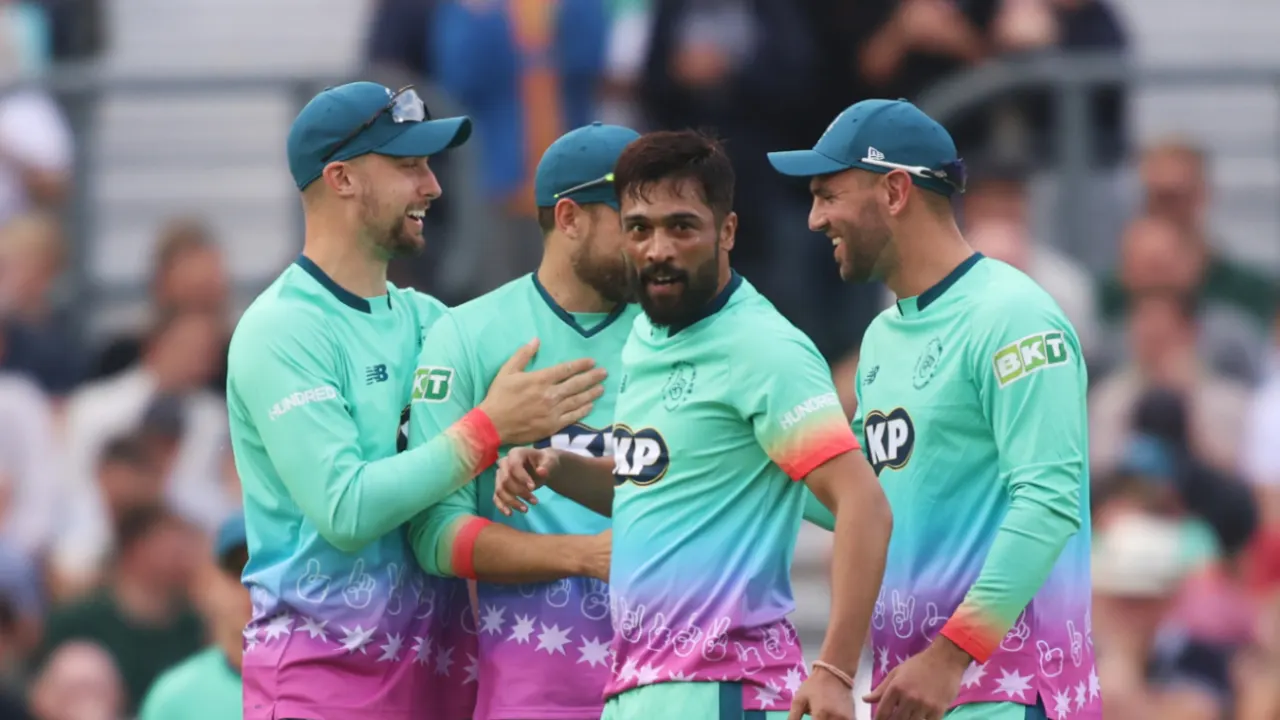The England and Wales Cricket Board (ECB) had lofty ambitions for The Hundred, a tournament designed to revolutionize cricket and attract a new generation of fans. However, the tournament remains subject to the unpredictable forces of the market. The recent match featuring Mohammad Amir for the Oval Invincibles encapsulates both the promise and the problems facing this innovative competition.
Mohammad Amir’s Brief Yet Impactful Appearance
A Star’s Fleeting Performance
There was barely a quarter of an hour between Mohammad Amir’s first ball for Oval Invincibles this season and his last. Signed as a short-term replacement, Amir bowled 15 of the first 20 balls of his debut fixture, returning impressive figures of 2 for 7. Yet, his stint was brief; he walked off into the south London sunset with Spencer Johnson set to replace him the following Sunday. Amir’s ephemeral participation underscored one of The Hundred’s key challenges: maintaining fan engagement in a league that permits one-match contracts.
A Sold-Out Yet Low-Key Curtain-Raiser
The Hundred’s season opener was relatively low-key. Officially, tickets were sold out with an attendance of 23,621 for the men’s game, but fans witnessed two heavily one-sided games. Only 342 balls, equivalent to 57 overs in traditional cricket, were bowled across a day that concluded well before sunset at 8:40 pm. Despite the early success of the Oval Invincibles in both men’s and women’s tables, the nature of the games left some fans wanting more.
Challenges of Short-Term Contracts
The Issue of Player Continuity
Amir is not the only overseas player in The Hundred who has arrived on a short-term contract. Daniel Hughes (Southern Brave), Josh Little (Welsh Fire), and Chris Green (Trent Rockets) have all been announced as last-minute replacements, with several players missing the start of the tournament due to commitments with Major League Cricket (MLC).
Competing Tournaments
The inaugural season of The Hundred three years ago clashed only with the Caribbean Premier League. In 2024, it avoids this overlap but faces competition from MLC and Canada’s Global T20, where lucrative contracts have lured some of the biggest names away from the UK. Stars like Rashid Khan, Nicholas Pooran, and Haris Rauf missed the first week of the season, impacting the tournament’s star power and fan engagement.
The ECB’s Vision for Fan Engagement
From Casual Fans to Tribalism
The ECB has been positively surprised by the quick support new teams garnered when The Hundred launched three years ago, with merchandise sales surpassing expectations. However, Amir’s short stint highlighted the difficulty in fostering deep fan connections. “We need to move it more into tribalism,” said Vikram Banerjee, the ECB’s head of business operations. He envisions fans of teams like London Spirit traveling around the country to support their teams, similar to the dedicated fan bases seen in English football.
Long-Term Ambitions
The ECB’s pitch to prospective investors emphasizes a long-term vision. They aspire for The Hundred to become the second-biggest cricket league globally, behind only the Indian Premier League (IPL). This ambition is unashamedly forward-facing, focusing on a future where the tournament nurtures a passionate, tribal fan base.
Market Realities and Competitive Landscape
The Appeal of Other Formats and Leagues
The Oval’s opening day saw a mix of family audiences and the usual evening crowd. London’s consistent demand for cricket at affordable prices can skew perceptions of The Hundred’s broader appeal. However, the presence of top players from past, present, and future internationals indicates a strong foundation.
Addressing the Entertainment Factor
The Hundred aims to be an all-encompassing entertainment package. “It’s an awesome competition,” said Australian allrounder Ellyse Perry. “The atmosphere at the matches is brilliant, the quality of cricket is outstanding, and it’s such a nice landmark tournament in the middle of the English summer.” Despite this, moments like the 10-minute delay to cover a wet patch during the women’s game are reminders of the logistical challenges that can detract from the spectacle.
The Role of Private Investment
Attracting Stakeholders
The ECB is using The Hundred as a ‘shop window’ this summer, hoping to attract private investors. The sale of stakes in the eight teams is part of a strategy to infuse fresh capital and drive the tournament toward its ambitious goals. This move is crucial for sustaining the league and enhancing its competitive edge in a crowded sports market.
Ensuring Long-Term Stability
Private investment is seen as a pathway to ensure long-term stability and growth. The ECB’s approach emphasizes creating a sustainable model that can weather the fluctuations of market forces and continue to attract top talent and dedicated fans. This strategy is designed to balance immediate market realities with the long-term vision of establishing The Hundred as a premier global cricket league.
A Balancing Act for The Hundred
The Hundred represents a bold experiment in the world of cricket, blending innovation with tradition. The ECB’s ambitions are clear, but the tournament’s future hinges on navigating market forces, ensuring player continuity, and building a passionate fan base. As The Hundred continues to evolve, it will need to address these challenges head-on, balancing the immediate demands of the market with its long-term vision of becoming a cornerstone of global cricket.
While the early days of the 2024 season have shown promise, the journey to transforming The Hundred into a premier global league is far from complete. The ECB’s willingness to adapt and innovate will be crucial in overcoming the hurdles ahead and achieving their ambitious goals for this pioneering competition.
Please check for information on the best betting sites in India – https://selectory.org/best-betting-sites/















